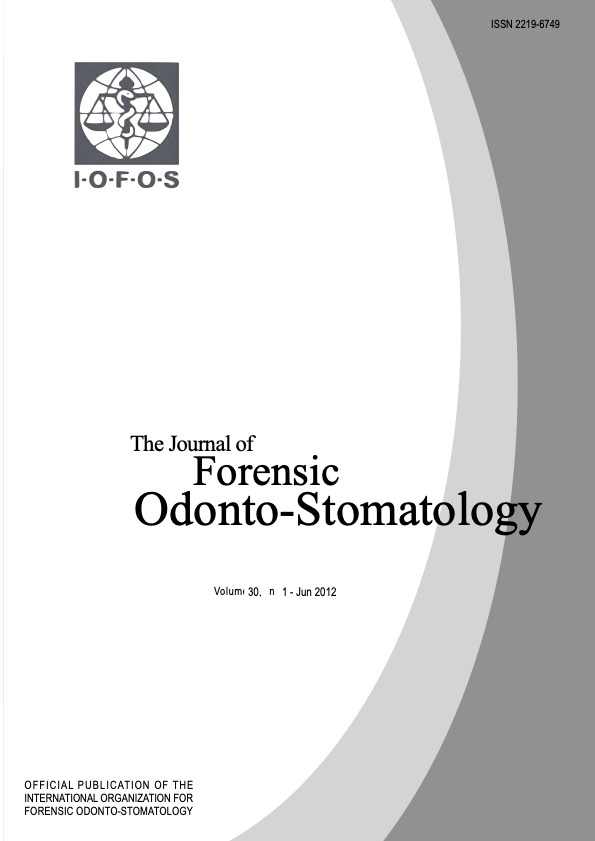Sex determination by linear measurements of palate bone and skull base.
Keywords:
Forensic anthropology, anthropometry, forensic dentistry, sex, skull, palateAbstract
Genetically determined sexual dimorphism is not restricted to reproductive organs. All body structures show sexual differences which emerge during puberty and persist lifelong. The aim of this study is to obtain a reliable method for sex determination through the analysis of linear measurements of palate bones and skull base. One hundred skulls of both sexes, 50 from males and 50 from females, aged between 22 and 55 years, from the São Gonçalo Cemetery of Cuiabá, capital of Mato Grosso state, Brazil, were analyzed. Distances between the incisive foramen, right and left greater palatine foramens and the basion were measured with a digital caliper. Finally, data were tabulated and statistically analyzed. Measurements showed significant sexual dimorphism, except the distance between the right and the left greater palatine foramens. The superior expression of sex dimorphism corresponded to the distance from the basion to the incisive foramen. The authors obtained two mathematical models for sex determination, with a reliability rate of 63% and 65% respectively

